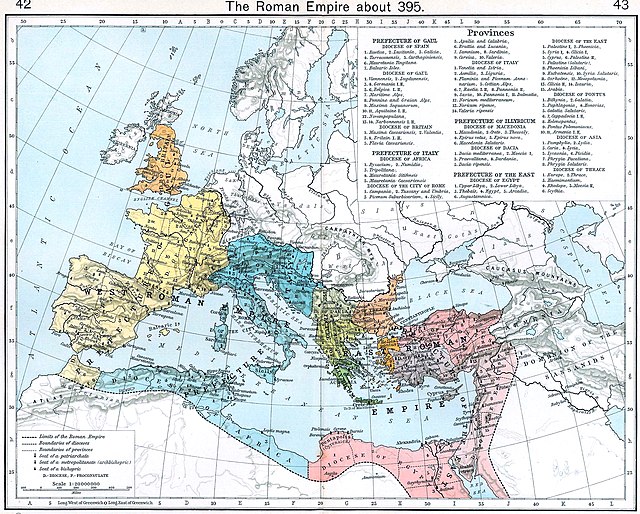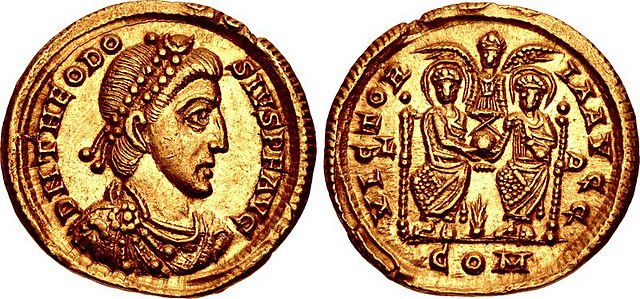First Council of Constantinople
The First Council of Constantinople was a council of Christian bishops convened in Constantinople in AD 381 by the Roman Emperor Theodosius I. This second ecumenical council, an effort to attain consensus in the church through an assembly representing all of Christendom, except for the Western Church, confirmed the Nicene Creed, expanding the doctrine thereof to produce the Niceno-Constantinopolitan Creed, and dealt with sundry other matters. It met from May to July 381 in the Church of Hagia Irene and was affirmed as ecumenical in 451 at the Council of Chalcedon.
9th century Byzantine manuscript illumination of I Constantinople. Homilies of St. Gregory of Nazianzus, 879–883.
Gregory of Nazianzus presided over part of the Council.
Theodosius I, also called Theodosius the Great, was a Roman emperor from 379 to 395. During his reign, he succeeded in a crucial war against the Goths, as well as in two civil wars, and was instrumental in establishing the creed of Nicaea as the orthodox doctrine for Christianity. Theodosius was the last emperor to rule the entire Roman Empire before its administration was permanently split between the West and East.
Bust of an emperor found in Aphrodisias (Aydın, Turkey), most likely Theodosius I.
The administrative divisions of the Roman Empire in 395, under Theodosius I.
Solidus of Theodosius, showing both him and his co-emperor Valentinian II (r. 375–392) enthroned on the reverse, each crowned by Victory and together holding an orb victoria augg ("the Victory of the Augusti")
Marble fragment of monumental column to emperor Theodosius I






